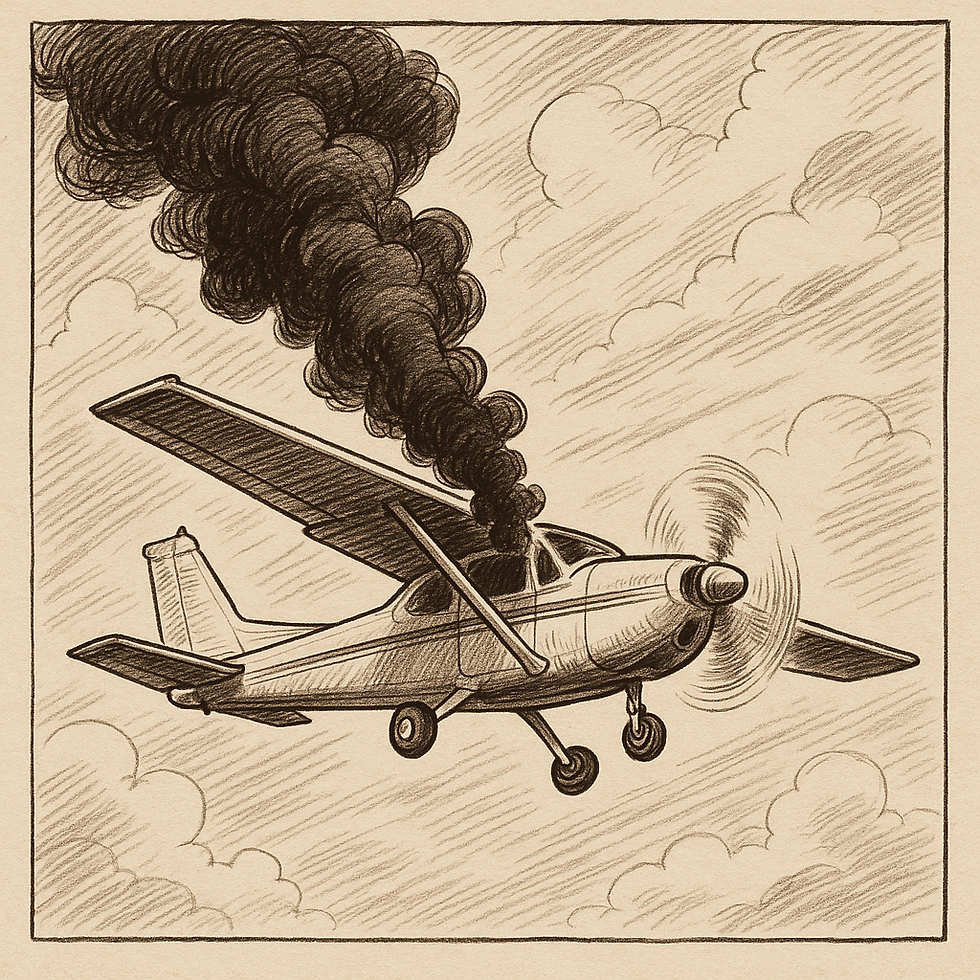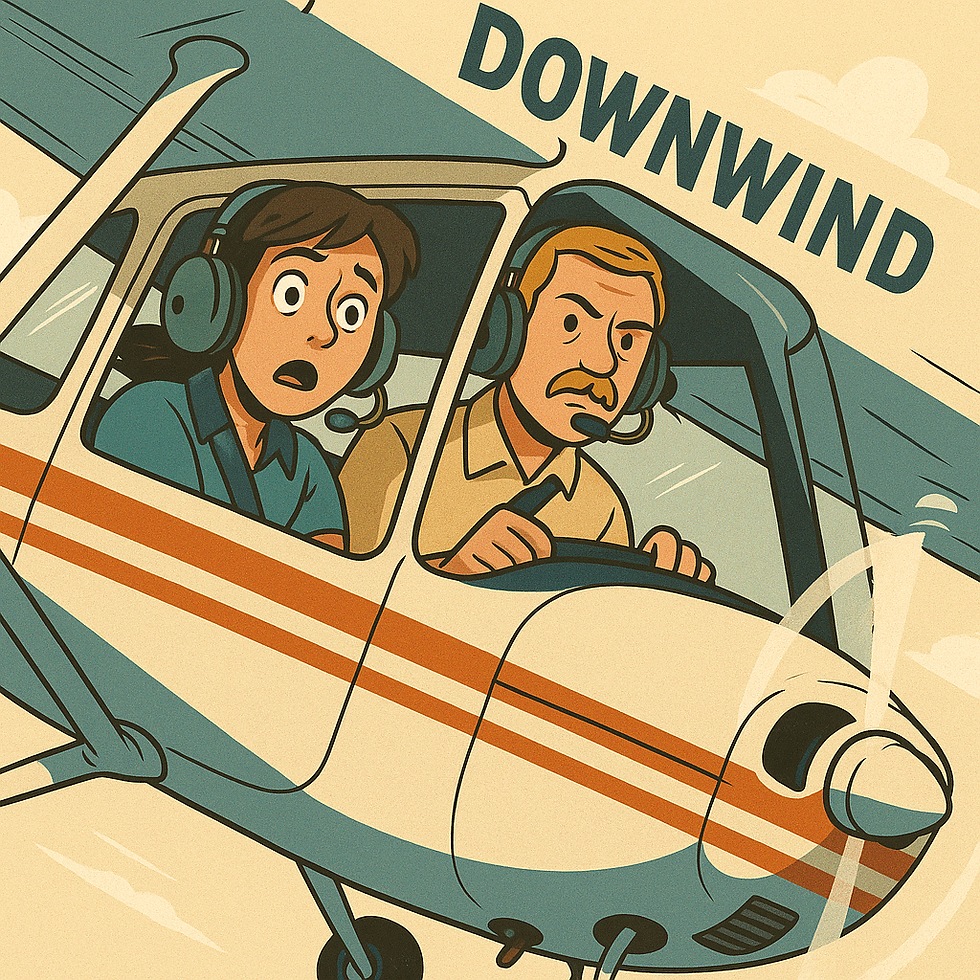“Stay Sharp or Go Dull: Why Regular Training Isn’t Optional”
- Adam Glaysher
- May 19
- 2 min read
By The Flying Inkpot

There’s a truth every seasoned pilot knows but every new pilot needs to hear often: the sky forgives few mistakes, and it never rewards complacency.
Let’s have a little fireside chat about why regular training matters—not just to pass a checkride, but to stay alive, confident, and competent out there in the blue.
The Rust Never Sleeps
Flying isn’t like riding a bike. Sure, your certificate doesn’t expire (unless you forget that flight review), but your sharpness will. If you’re not in the system regularly—shooting approaches, managing workloads, refining control—your decision-making gets slower, your scan gets sloppier, and your comfort level slowly drifts from confidence to complacency.
I’ve flown with pilots who “took a little break” and came back with wide eyes and cold hands. What used to be second nature now required checklist confirmation. That’s not a safe place to be, and it doesn’t need to happen.
Training: Not Just for Students
Training is often misunderstood as something you do until you’re rated. Truth is, training is something you do because you’re rated.
Regular training:
Exposes your blind spots.
Refreshes perishable skills like emergency procedures, unusual attitudes, and crosswind landings.
Builds comfort in the uncomfortable—night ops, soft fields, busy class B transitions, or flying under the hood again.
Even as a CFI, I schedule dual time. Why? Because if I want my students sharp, I need to be sharper.
Currency vs. Proficiency
Let’s say it again for the folks in the back: being legal doesn’t mean being safe.
The FARs provide a minimum standard. Proficiency is a personal and professional commitment. If you haven’t shot an approach in six months, you might be current under Part 61—but you’re certainly not comfortable.
You owe it to your passengers, your fellow airmen, and yourself to be better than just “legal.”
What Should Regular Training Look Like?
Start with this simple personal checklist:
Quarterly dual flights – Review maneuvers and emergency procedures.
Biannual IFR tune-ups – Even if you’re current, refresh in actual or with a safety pilot and CFI.
Annual scenario-based training – Incorporate decision-making, weather, and diversions.
Ongoing self-study – Read accident reports, watch ASRS stories, and review the ACS.
Final Thoughts From the Inkpot
Pilots are forged through repetition, reflection, and resolve.
You don’t become great by chance—you become great by intention.
So don’t wait until your hands are rusty and your confidence is low.
Go fly with an instructor. Ask questions. Practice the hard stuff.
Be the pilot who leads by example—and keeps the edge sharp.



Comentarios